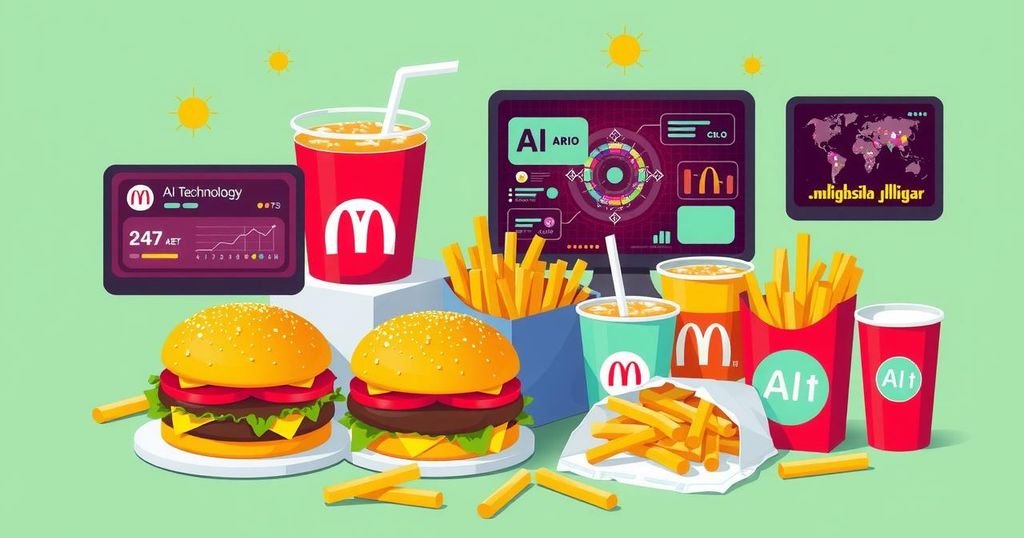Fast Food Chains Embrace AI Revolution Amid Initial Challenges
Fast food chains are significantly adopting AI technology to optimize operations and improve customer experiences. Leaders such as McDonald’s and Wendy’s are revamping their services with tools like AI-powered drive-throughs and automated systems, while Yum! Brands introduces the ‘Byte by Yum!’ platform for integrated management. Despite initial hurdles, the industry’s commitment to AI is growing, promising enhanced service and operational efficiency as they move toward the future.
The fast food industry is embracing artificial intelligence (AI) at an unprecedented pace. Major players like McDonald’s, Yum! Brands, and Wendy’s are not just experimenting; they’re transforming their operational frameworks to enhance customer and crew experiences. McDonald’s CEO Chris Kempczinski recently highlighted AI as one of the top three trends to watch by 2025, alongside protein and sauces, signaling a significant shift toward tech-driven efficiencies in restaurants.
An impressive 42% of restaurant operators in a recent TD Bank survey believe AI will significantly impact the industry by 2025, overtaken only by lower interest rates. McDonald’s is taking bold steps to modernize its 43,000 locations with advanced kitchen automation, AI-powered drive-throughs, and enhanced managerial tools. This includes equipping kitchen devices with sensors to create a real-time operational picture via edge computing.
Additionally, McDonald’s is exploring computer vision technologies to verify order accuracy before handoff, alongside potential generative AI to manage administrative tasks like scheduling. Despite a past misstep in AI voice-ordering with bacon ice cream mishaps, McDonald’s is partnering with Google Cloud for renewed efforts.
Wendy’s is also embracing AI, although its early results prompted some customer frustration. “It. Is. Horrible,” one diner lamented, highlighting the challenges with early AI voice recognition. However, improvements have been noted, with CEO Kirk Tanner affirming that the AI’s understanding and accuracy are enhancing notably.
Yum! Brands announced the ‘Byte by Yum!’ platform, aiming to overhaul operational efficiency across its KFC, Taco Bell, and Pizza Hut franchises. With this AI-driven approach, businesses can improve order accuracy and streamline everything from online orders to employee training. Taco Bell and Pizza Hut have reported improved efficiency thanks to these innovations.
The overall trend shows that fast food restaurants are actively investing in AI to tackle labor shortages, enhance forecasting, and cut down on waste. Senior vice president at Cognizant, Anup Prasad, states, “Restaurants are leveraging AI and automation to enhance operations and elevate guest and employee experiences.”
As the industry moves forward, experts like Sam Jones of Torch Capital foresee AI applications evolving to anticipate consumer needs, turning ordering into a more personal experience. Even though this AI adoption journey is just beginning, Jones believes significant opportunities await in streamlining operations and boosting profitability as chains leverage intelligent technologies.
The fast food sector is rapidly integrating AI, marking a pivotal shift aimed at enhancing efficiency and customer satisfaction. With leaders like McDonald’s and Wendy’s pioneering new AI initiatives, the potential to streamline operations, boost profitability, and redefine customer experiences is becoming increasingly tangible. As the industry navigates initial challenges, the future holds promising advancements in tech-driven dining experiences, ensuring that AI’s role will only expand in the years to come.
Original Source: www.pymnts.com




Post Comment